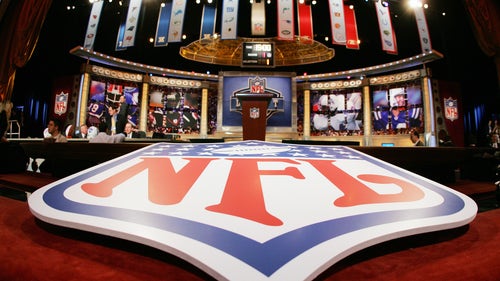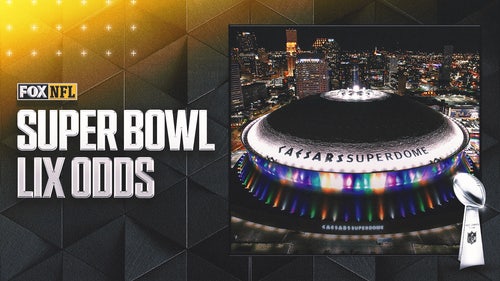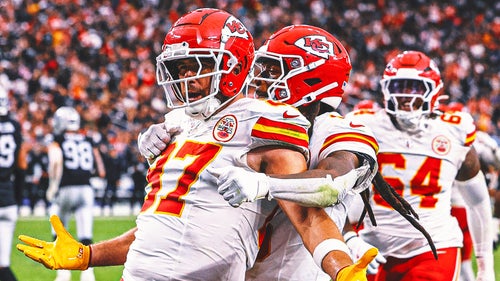
Pro Football 101: Randy White ranks No. 45 on all-time list
By Joe Posnanski
Special to FOX Sports
Editor's Note: Throughout 2021 and 2022, Joe Posnanski is ranking the 101 best players in pro football history in collaboration with FOX Sports. Posnanski will publish a detailed look at all 101 players on Substack. The countdown continues today with player No. 45, Randy White.
Here’s how much Randy White meant to the Dallas Cowboys: In 1984, at age 31 — after being first-team All-Pro five times in six years — he decided to hold out for a better deal. That’s not an uncommon story. White went fishing in East Texas for six weeks and tried to catch a world-record bass while America’s Team decided whether to make him the highest-paid Cowboys player ever.
Here’s the uncommon part: His teammates just about lost their minds without him. They wore black armbands with his No. 54 on them to practice. They had "WHERE’S RANDY?" signs taped to the back of their helmets. They took turns publicly siding with White against the Cowboys, with one player telling reporters. "Give him the moon. He deserves it."
"He’s the best player in football," safety Charlie Waters said. "I don’t mean he’s the best defensive lineman in football or even the best defensive player in football. No, he’s the best player — period."

Randy White, who played for the Cowboys from 1975 to '88, was relentless in pursuit of quarterbacks up the middle and running backs anywhere on the field. (Photo by Focus on Sport/Getty Images)
I’m not sure that an NFL player holding out has ever received that much support from teammates … and it wasn’t just because Randy White was such a great player, though he was. No, it’s that Randy White was the Dallas Cowboys, as much or more than Roger Staubach had been, as much or more than Tony Dorsett, as much or more even than Tom Landry.
Whatever the Dallas Cowboys had come to represent as America’s Team — whether you loved them or loathed them — that was Randy White.
He was larger than life on the field, modest as the day is long off of it, the ultimate blue-collar football hero … and also the meanest son of a gun around. They called him the Manster — half-man, half-monster.
"If John Wayne were alive," one Dallas columnist told Sports Illustrated, "he’d want to be Randy White. Not play Randy White. Be Randy White."
"I respect the way he played football and the player that he was," Washington’s Pro Bowl guard Mark May would say. "But I still have some bitter feelings, and I’ll probably have them until the day I die." (More on that in a minute.)
White grew up in Wilmington, Delaware, and though MaxPreps called him the best all-time football player from Delaware, the truth is that he was not even all-state in football. He was probably more accomplished as a baseball player; several scouts, including the famed Peanuts Lowrey*, thought he showed great promise on the diamond.
*My favorite Peanuts Lowrey fact — and there are so many good ones — is that he played THREE PARTS in the absolutely horrendous Grover Cleveland Alexander movie "The Winning Team." His favorite part was as the pitcher who beaned Alexander because it meant that he got to throw at future president Ronald Reagan.
White was never going to play pro baseball, however. No, his father, Guy, had played college football before becoming a butcher, and he made it clear from Randy’s youngest days that he too would play college football.

White was routinely double-teamed, which opened opportunities for his defensive linemates to make plays. (Photo by George Gojkovich/Getty Images)
"He made the decision," Randy would say, "but it wasn’t a big deal. From the time I was 9, that’s all I wanted to do anyway."
Guy never missed a single game his son played, and he raised Randy on the lessons he himself had learned from football: Never quit. Don’t do anything halfway. Finish what you start. The team comes first. And, most of all, be humble.
Randy would say he received interest from only three colleges, and he ended up choosing Maryland, where he played multiple positions and, in the end, won the Outland Trophy as college football’s best lineman.
I love the story about Guy getting word about the Outland Trophy — he certainly didn’t hear it from Randy. He was told by somebody else and promptly called his son.
Guy: "Congratulations on the Outland Trophy."
Randy: "Oh, you heard."
Guy: "Yeah."
Randy: "OK, well, goodnight."
If Guy was at the heart of the Man part of Manster, it was Randy’s mother, La Verne, who helped unleash the beast. Randy would tell so many stories of his mother’s passion and fury. One of his favorites came from high school, when some guy in the crowd was screaming at him all game. At one point, late in the game, he looked up in the stands to find the man and saw La Verne beating on him with her umbrella.
Years later, in Washington, a fan poured a beer on Randy’s sister. La Verne pulled a blackjack from her purse and, you know, expressed her displeasure.
Well, football is a violent game. About those bitter feelings, Mark May said the first time he faced White, there was a typical pileup at the end of a play, and suddenly he felt a hard thump in his back, and he went sprawling a few yards. He got up, enraged, only to see Randy White glaring back at him, hoping for a fight.*
"He’s like a shark in the water," Charlie Waters said.
*May also tells a funny story about how he and White would go at it every game, calling each other every name in the book after each play. And then, in the huddle, May’s teammate Russ Grimm — who had been getting absolutely destroyed by White — started screaming at May to just shut up. "You’re just getting him madder," Grimm griped, "and he’s lined up on MY SIDE!"
Of course, Randy White was always so much more than just intensity and intimidation. The Manster was an incredible athlete, a defensive tackle fast enough to chase down running backs, strong enough to power through offensive linemen and savvy enough to outthink quarterbacks and be where he needed to be to blow up plays.
His speed astounded opponents. Grimm, who faced White as much as anyone, used to practice against wide receivers on Cowboys week, just so he could approximate White’s speed.

White sacked Steelers QB Terry Bradshaw twice in Super Bowl X on Jan. 18, 1976. Two years later, he was co-MVP of Super Bowl XII when Dallas beat Denver 27-10. (Kidwiler Collection/Diamond Images)
In all, White had 111 sacks in his career, third among defensive tackles, which is astonishing, considering that he was double-teamed on pretty much every play. But his sack total offers only a small glimpse at his dominance. By taking on multiple blockers on every play, he also helped free up his teammates, Too Tall Jones (106 sacks), Harvey Martin (114) and, later, Jim Jeffcoat (102).
And White was a crusher against the run. Walter Payton said White hit him harder than any other defensive player. In all, White was named first-team All-Pro seven times, and he shared the Super Bowl XII MVP award with Martin.
But, yes, it was the Manster’s intensity that took him to a different level. He simply never stopped, never relented, never took off a play. He missed one game in his entire career and played most of one season on a broken foot.
"No one ever played football with more intensity than Randy White," his coach, Tom Landry, said.
You know the scene in "Cool Hand Luke" in which Luke refuses to stay down? Nothing is scarier than someone who keeps coming at you, and White went at linemen with unceasing and never-ending energy and rage. John Hannah, perhaps the greatest guard in football history, used to say that the one time he felt butterflies before a game was when he faced Randy White and the Cowboys.
"The best thing to do when playing Randy White," running back Joe Washington once said, "is to call in sick."
Joe Posnanski is a New York Times bestselling author and has been named the best sportswriter in America by five different organizations. His latest book, "The Baseball 100," came out last September.










